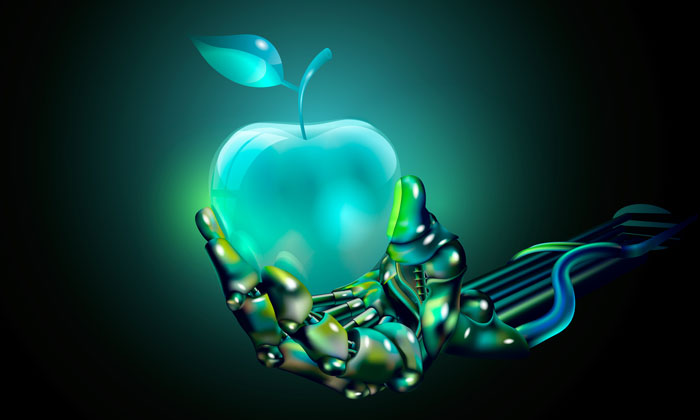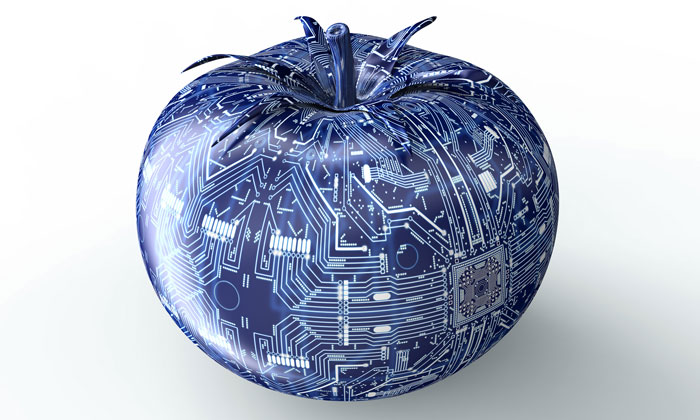The future of food safety: the revolution is on our doorsteps.
- Like
- Digg
- Del
- Tumblr
- VKontakte
- Buffer
- Love This
- Odnoklassniki
- Meneame
- Blogger
- Amazon
- Yahoo Mail
- Gmail
- AOL
- Newsvine
- HackerNews
- Evernote
- MySpace
- Mail.ru
- Viadeo
- Line
- Comments
- Yummly
- SMS
- Viber
- Telegram
- Subscribe
- Skype
- Facebook Messenger
- Kakao
- LiveJournal
- Yammer
- Edgar
- Fintel
- Mix
- Instapaper
- Copy Link
Posted: 5 May 2017 | Rob Chester | Managing Director | NSF International | No comments yet
In five years’ time, how will best practice look for food safety in light of technological developments?


At NSF International’s own conference, ‘Evolution Meets Revolution’, in London in February 2017, familiar as I am with the developments in the fast-evolving food sector, I was bowled over by the scale of largely positive change that technology is bringing our way. This really is a revolution. As Tom Chestnut, NSF International’s Global VP for Food, said “we can’t see it now, but we will look back on the year 2017 as a tipping point for the food industry”. This is the moment when innovations that have been considered as niche developments for early adopters will transform into mass market industry and consumer tools. By 2036 there will be one trillion connected devices, with 10 billion users and $20 trillion in revenue, but if you think 20 years is a long time off , I can assure you there’s an awful lot more to think about in the next five years.
What brings opportunities often brings problems and technology is no exception. Increasing complexity and power in human hands places huge responsibilities upon all of us. The developers of artificial intelligence worry greatly about social responsibility.
The challenges to today’s brands are many and complex. They have to meet the requirements to maintain consumer trust, be legally compliant, achieve brand protection and fulfil corporate social responsibilities across multiple territories. This means at a minimum the need for diligence in food safety and quality, nutrition, product authenticity, supply chain security, animal welfare, ethical trading issues and sustainability. At the same time the pace of technological change is accelerating. In the last few years we have seen the advent of big data, predictive analytics, the internet of things, robotic working, 3D and 4D printing, DNA and isotope traceability, genetic modification, genome editing and more. Some of these add to the complexity of risk management, while others can help us manage supply chain risks more effectively. For this article I have picked just three innovations that are already impacting on how we approach food safety and brand protection: wearable technology, predictive analytics and alternative sources of protein. There were many more, which ranged from scientific techniques to verify the provenance of food products, as explained by Oritain’s Stewart Whitehead, through to a new standard, Clearview, aimed at helping the supply chain stamp out modern slavery.
Wearable technology
NSF International has been working with Google for nearly three years to fine-tune the application of Google glasses for food safety auditing and training. A huge advantage to the user testing has been the fact that NSF already audits all of Google’s worldwide food operations, and advancing the use of wearable technology was a natural evolution for a progressive company like Google. The latest hardware employed by NSF, the ODG R7, now has full-screen viewing while still maintaining full field of vision to complete tasks in total safety. As the user conducts an audit or task, they see a small screen that can display additional material for guidance, instruction and two-way audio-visual communication. The device also includes a camera and operates wirelessly, controlled through a small mouse worn on the finger. The potential uses are numerous: first and foremost, it means that remote auditing – in hard to reach or unsafe locations – becomes an economically viable proposition. Not only that, but even an untrained operator can carry out the audit with full guidance and tuition from a live auditor sitting at a screen on the other side of the world. Alternatively, extra guidance can be provided by pre-recorded mini training sessions. The possibilities are endless.
The pace of technological change is accelerating. In the last few years we have seen the advent of big data, predictive analytics, the internet of things, robotic working, 3D and 4D printing, DNA and isotope traceability, genetic modification, genome editing and more.
While NSF International is an early adopter of this technology, wearables are also in wide-spread use in the aerospace and automotive industries which typically require complex and high-precision tasks where accuracy is essential. The wearable technology market will already be worth over $126 billion by 2020. This is the so-called fourth computer paradigm (following mainframe computers, laptops and mobiles) where wearable devices will take over from mobile as the norm. But where it has taken mobile phones 10 years to develop from an iPhone 1 to today’s iPhone 7, the development of smart glasses will be four times as fast. By 2020 they will be a mainstream consumer product and mobile phones will rapidly be becoming a thing of the past. How will these and other devices in the Internet of Things connect? Likely through more innovation such as Google’s Project Loon (solar-powered balloons), high in the stratosphere, no more than 40 miles apart, providing high-speed connectivity across the globe. Facebook plans to use solar-powered drones to the same end.
Predictive analytics for food safety
The world’s capacity to store and manipulate data has grown exponentially to the point where artificial intelligence now outstrips human thinking and data can be measured in zettabytes. Where you have sufficient data, you can predict with reasonable confidence future outcomes. Predictive analytics are already in common use in other sectors, for example insurance, fleet management and for public policy, and, like wearable technology, the food industry is a relatively late adopter. In the UK, while the number of food business is growing fast, and customer complaints are rising by a similar percentage, the number of employees involved in food hygiene regulation and enforcement by comparison has fallen by 15%. How can we keep our citizens safe? In Chicago, U.S., the authorities have proven that predictive analytics can forecast accurately when there is a major risk of a food business failing a food safety audit and enable pre-emptive action to be taken.
ROB CHESTER leads NSF International’s food safety services and operations in the UK, and serves as part of the senior management team for the NSF Food Safety Division’s Europe, Middle East and Africa (EMEA) region. Rob has a proven track record across a wide range of disciplines including responsible sourcing, risk management and trading law, and experience as chief compliance officer for a division of a large U.S.-based retailer.
Issue
Related topics
Food Safety, Robotics & automation, Technology & Innovation, The consumer










